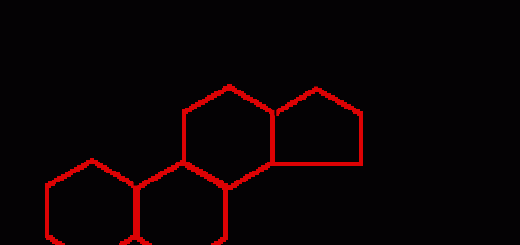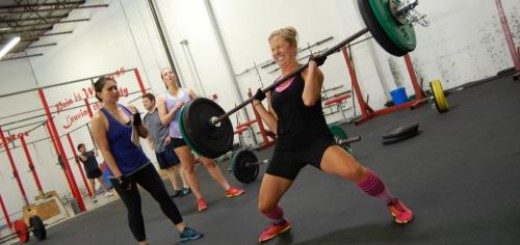The Squat: Narrow or Wide Stance?
Increased glute and quad activation, greater ankle and hip mobility – all from a wide squat?
A Case for Wide Stance Squats
Squats are a staple of any sound exercise program. Whether goblet, front, or back, we need to include them, and we need to squat wide. The value that squats add to quadriceps growth and functional capacity in life is undoubted. However, traditional or narrow stance squats simply don’t provide the same total muscular activity as a wide stance.
Conventional wisdom of ideal squat form has been popularized, and anyone with half an interest in strength training will eventually stumble upon information on how to improve and modify the lift. Squats should be looked at as more of a movement, not simply a specific muscle developer, and the entire body should be involved in the lift. Activation of the entire lower body complex, including the posterior chain, and core stability should be top priorities.
When squatting, stance width will have a dramatic effect on whole body muscle activation. The most common method of squatting is the back squat, so the aim of this lift should be on improving whole body activation. Intricacies of the lift, including rack position, foot angle, and head position, are personal preferences, but the stance width you take, be it geared or raw, should be wide if your goal is total muscular development.
Research from the University of Abertay in the United Kingdom has shown that when a wider stance squat was performed, EMG results for glute activation were significantly higher than with a normal stance (1). The study also concluded that total quadricep activation was identical in both the wide and narrow stance squatting pattern (1). Wide stances work more muscles, but this isn’t the only advantage of going wide.
Why go wide?
Glute activation: Taking a wider stance when squatting (i.e. stance at 140–150 percent of shoulder width) allows for greater posterior displacement of the hips. While maintaining a vertical posture with the torso, a lifter can achieve greater glute activation when depth is reached in comparison to a narrow stance (i.e. stance at 100 percent of shoulder width; 1–3).
Quadricep activation: Most of the popularity of narrow stance squats is based on personal opinion and “feel.” There isn’t any data to support the claim that a narrow stance activates the quadriceps to a greater level than any other stance width (4). Changing the stance changes the movement. Narrow stances require an anterior tracking of the knee. While this isn’t inherently a bad movement, it does place a greater stress on the knee. If the movement isn’t trained in this style in a regular fashion, the recessive forces exerted on the knee could lead to patellar tendon strains or tendonitis (3, 5). In order to reach squat depth with a wide stance, the lifter must maintain a more vertical shin position. This places far less stress on the knee and still activates the quads to the same degree.
Ankle mobility: The range of motion in the ankle can be a limiting factor when performing a narrow stance squat. Weightlifting shoes were developed for a reason. A wider stance alleviates any limited ankle mobility. Again, posterior tracking of the hips through a wider squatting pattern maintains a more vertical shin position, making it easier to reach depth (1, 3). Tight calves should be addressed with mobility drills and foam rolling, but why limit or restrict a squatting pattern if you can’t reach depth in a narrow stance? Throw those feet out, work around your issue, and train in your own capacity.
Adductor longus: Reportedly, increased activity of the adductor longus was only seen when using a wider stance (4). How many times have you gone to the gym just hoping to increase your adductor longus strength? Countless, I know, but don’t disregard this muscle. Any extra muscular activity during the squat is used to increase force production, and force production equals more pounds on the bar.
Power production: Muscle activation and the concurrent gains from stimulating more muscle fibers have an obvious advantage for hypertrophic gains. In short, the more muscles you turn on, the more likely they are to grow. The greater muscular activation seen with wider stance squats transfers to more athletic and competitive traits.
Power is one of the most coveted traits. It is the heart of athletics because powerful players perform well. Increasing the potential to produce power with a wide squat improves power production when the stance width was at 150 percent of shoulder width (6). The ultra wide stance, which is 200 percent of shoulder width and is used more frequently in geared squats, didn’t show the same level of power production (6). Some findings demonstrate that ultra wide squats have their application but mainly for geared lifting, not power development.
It’s all in the hips
In strength and conditioning programs, a focus on hip strength and function has moved to the forefront. Proposed quad dominance and weak glutes are a concern for sedentary populations, and hip and core strength are getting some much needed attention. Following this trend of movements over muscles, we need an all-encompassing approach to hip function during training.
The wide stance squat provides the best option for training the hips in all three planes of motion. The wide movement exhibits greater hip flexion and smaller plantar flexion angles than narrow stance squats (1). It also produces significantly larger hip extension movements. Wide stance squats are achieved with a posterior tracking of the hips, which leads to greater hip extension to return the bar back up (2). Further, wide stance squats have been shown to have greater abduction and adduction with greater internal and external rotation of the femur during the lift (7).
Some argue that the wide stance squat isn’t a functional position and that a more traditional squatting pattern better mimics life applications. However, the goal of a wider stance is muscular development and strength, not increased functional movement. Movement in all three planes of motion develops a stable hip joint that can handle a tremendous amount of stress. In order to handle compressive loads, a strong spine is a must.
Back breaking squats
Some argue that the horizontal positioning of the torso during a wide stance squat creates larger forces on the lumbar in comparison to a narrow stance (1). This is believed to increase the risk for low back injuries. Interestingly enough, this isn’t the case. It’s contrary to study results. When a narrow stance squat is performed, the distance to parallel is greater compared to a wider stance. Reaching depth requires tucking the lumbar under the torso to facilitate hip flexion. The flexion of the spine under a load shows peak forces on the L5/S1 joint and could be linked to disc bulging and further spinal complications (1–2).
With a wide stance, the posterior movement of the hips can contribute to a more neutral back position without compromising it by tucking the lumbar (1). This isn’t to say that a traditional squat will cause low back injury, but without development in this squatting pattern, there is greater force placed on the spine over time.
The wider stance recruits more muscles to perform the task and is a more encompassing movement compared to a narrow stance. The goal of any compound lift should be to engage as many muscles as possible, and it’s clear that a wider stance better accomplishes this task. While engaging more muscles, it also places comparatively far less force on the lumbar (1–2). With less stress on your spine and more muscular involvement, wide stances are clearly the way to go.
Go wide!
The use of varying stances of the squat to target specific areas in the quadriceps has yet to be scientifically proven. Most of the popularity of narrow stances is still a feel-based venture. We train because we enjoy the challenge, and the feel or “burn” we get drives most of us even if common knowledge tells us not to. It’s the pain that leads to the success. A wider stance might not stimulate the same feel on your quadriceps, but it’s shown to have the exact same muscular activation as a narrow stance.
Stances at 150 percent of shoulder width have far more advantages over the traditional stance. Wider stances activate more muscles. The glutes are a tremendous developer of power and strength, so if you have the capability to utilize their strength in a movement, you should do so. In a wide stance squat, the posterior displacement of the hips activates the glutes to a far greater extent than in a traditional squat (2). The posterior motion decreases anterior tracking of the knee. Excessive anterior tracking of the knee, as a result of a traditional squat pattern, causes greater compressive and shear forces on the knee (5).
The hips are multidirectional joints made for producing force in all three planes of motion, so wide stance squats are the better option for training them. Pushing the knees out to stay in line with the ankles causes rotation, abduction, and flexion and extension with the squatting pattern. Wide stance squats allow for a movement that produces more work at the hips than traditional squats.
Squatting to target that perfect tear drop vastus medialis is a waste. Use a squat stance that builds a better body all around. Spread your stance out, open up your hips, and train the movement fully. Don’t rely on feel. Use science to gain strength and size.
Works cited
- Swinton PA, et al (2012) A Biomechanical Comparison of the Traditional Squat, Powerlifting Squat, and Box Squat. The Journal of Strength & Conditioning Research 26(7):1805–16.
- Chiu LZF (2009) Sitting Back in the Squat. Strength & Conditioning Journal 31(6):25–27.
- Comfort P, Kasim P (2007) Optimizing Squat Technique. Strength & Conditioning Journal 29(6):10–13.
- Paoli A, Marcolin G, Petrone N (2009) The Effect of Stance Width on the Electromyographical Activity of Eight Superficial Thigh Muscles During Back Squat With Different Bar Loads. The Journal of Strength & Conditioning Research 23(1):246–50.
- Fry AC, Smith JC, Schilling BK (2003) Effect of Knee Position on Hip and Knee Torques During the Barbell Squat. The Journal of Strength & Conditioning Research 17(4):629–633.
- Sogabe A, et al (2010) Influence Of Stance Width On Power Production During The Barbell Squat. The Journal of Strength & Conditioning Research 24:1
- Pereira GR, et al (2010) Influence of Hip External Rotation on Hip Adductor and Rectus Femoris Myoelectric Activity During a Dynamic Parallel Squat. The Journal of Strength & Conditioning Research24(10):2749–54.
Original Article by: Brad Longazel at EliteFTS







